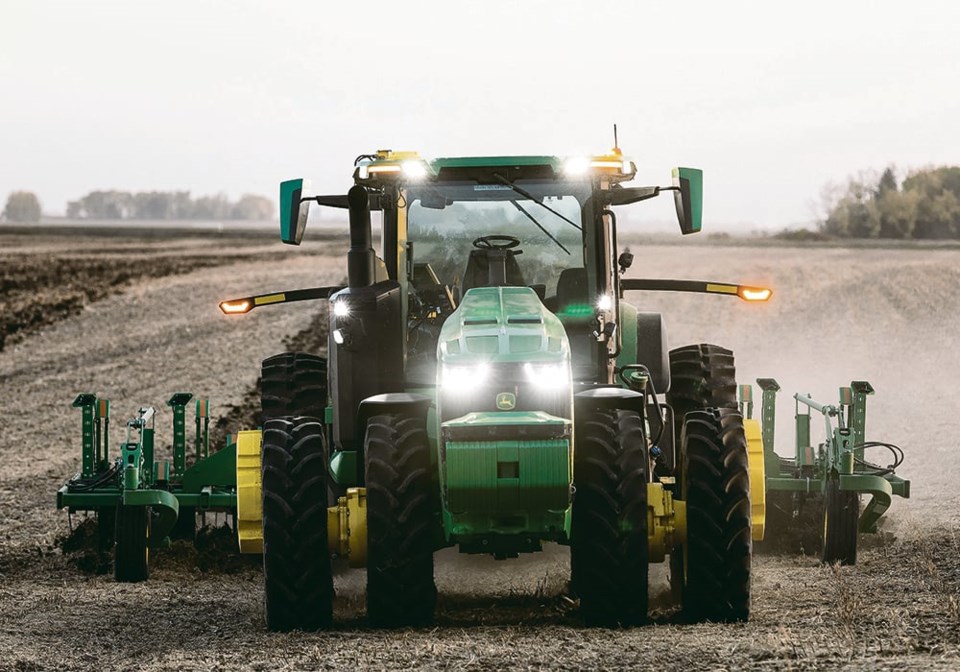WESTERN PRODUCER — As John Deere unveiled its 2025 model year product line in late February, it brought the company one year closer to a significant date: 2030. That is when the brand has promised to offer a complete fleet of autonomous equipment, able to handle a full farming season from seeding to harvest with self-driving machines.
“The fully autonomous capabilities that we have available today with our 8R in tillage applications will only continue to grow and develop as we see customers trying to address that labour availability and shortage that we see in many of their operations,” said Aaron Wetzel, vice-president of production systems for production and precision ag.
“We’ve publicly stated that by 2030, we want to have and demonstrate a fully autonomous production system for corn and soybean producers. That means every job through the beginning of tillage, planting, spraying and harvesting, we’ll be able to do that autonomously for our customers.”
Tailoring autonomous equipment first to corn and soybean producers allows the brand to reach the largest farming segment in North America, adding small grains and specialty crops capabilities as machines evolve.
To prepare today’s new equipment for that day, the brand is beginning to offer its 8R and 9R tractors with an autonomy-ready option package. It means the tractor will leave the factory with all the hardware, software and safety systems it will need for a self-driving conversion.
The new autonomous-ready package will include rear implement ethernet, newvisibility features, a back-up alarm, a 330-amp alternator, a brake controller and valve,and all the necessary connectors, controllers and harnesses.
The only additional item a farmer will need in the future to make the machine capable of autonomous operation will be the perception system, which consists of cameras and vision processing units.
Making machines capable of driving around a field is one thing. Having them control the complex operations they’re out there to perform adds another level of complexity.
“Having these tractors be easily able to upgrade into full autonomy is one of those areas we’re focusing on,” said Wetzel.
“What enables us to get there is the investments we’re making in job automation. Making machines smarter and easier to use will help our producers today and bring them along on the journey to full autonomous operation in the future.”
The move by Deere and other brands to move toward production of fully autonomous machines marks a major turning point in ag equipment evolution, one many wouldn’t have thought possible just a generation ago.
“I’ve been at John Deere 35 years and it’s amazing to see the transformation the company has gone through in the time I’ve worked with it,” he said.
“It’s astonishing. I think the pace of change is quickening. The amount of technology and new productive solutions we’re bringing to customers is only going to increase.”
But even though brands are preparing for a high-tech future, many producers may not be ready for that yet – or ever. Wetzel said Deere understands that and will continue to produce machines with varying levels of sophistication.
“I think customers are all at a different point in their technology journey. What’s great is we offer the solutions from the very basic levels of technology all the way to full autonomy. So, wherever a customer is in their journey, John Deere has a solution for them.”




